
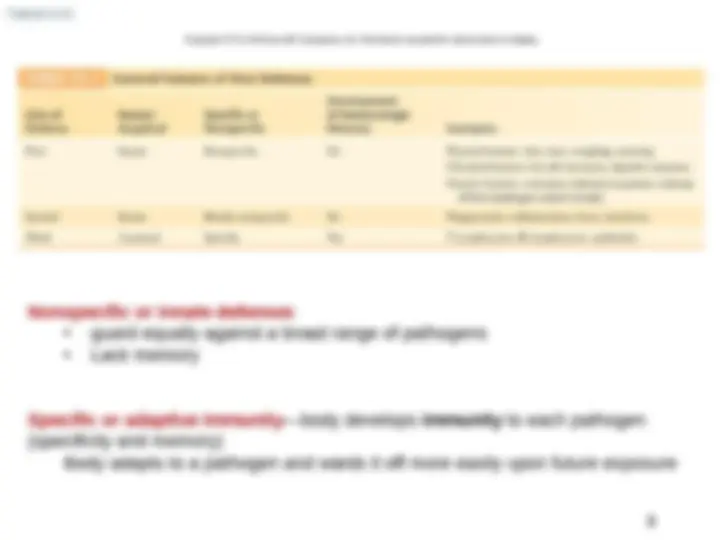
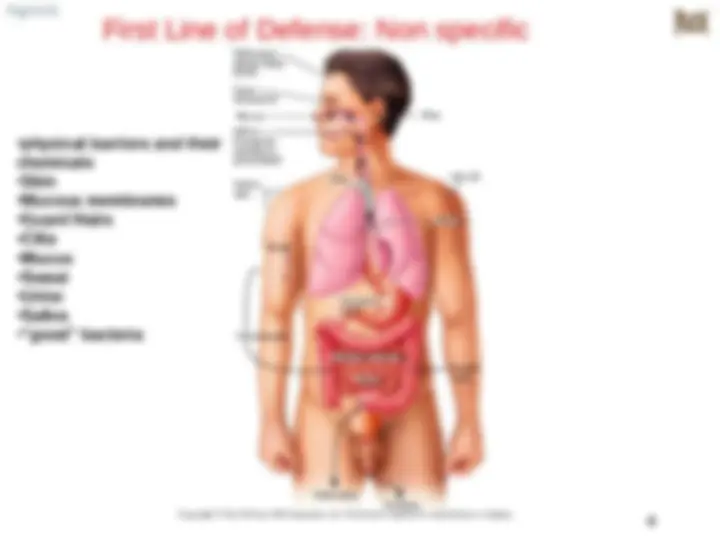
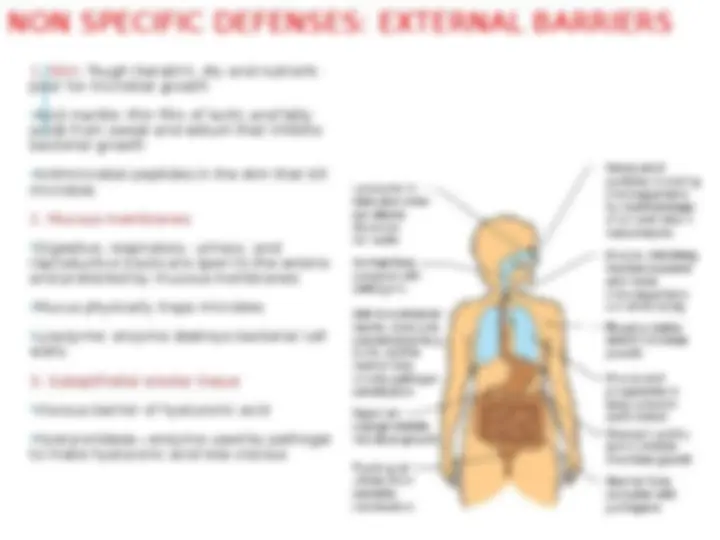
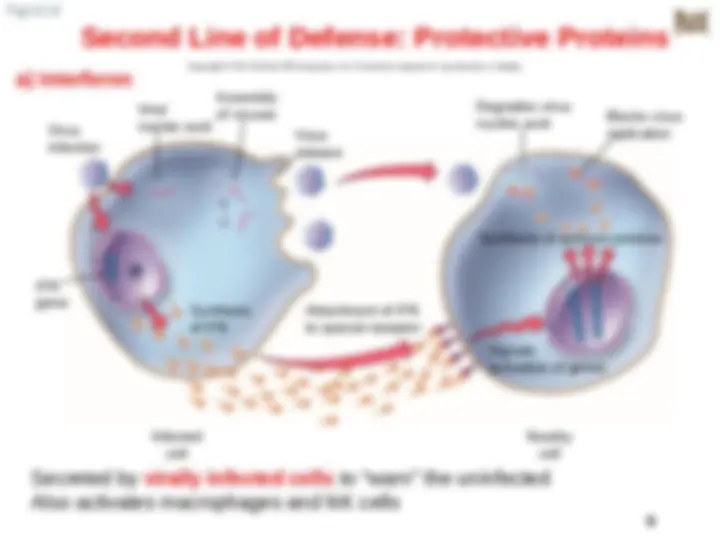
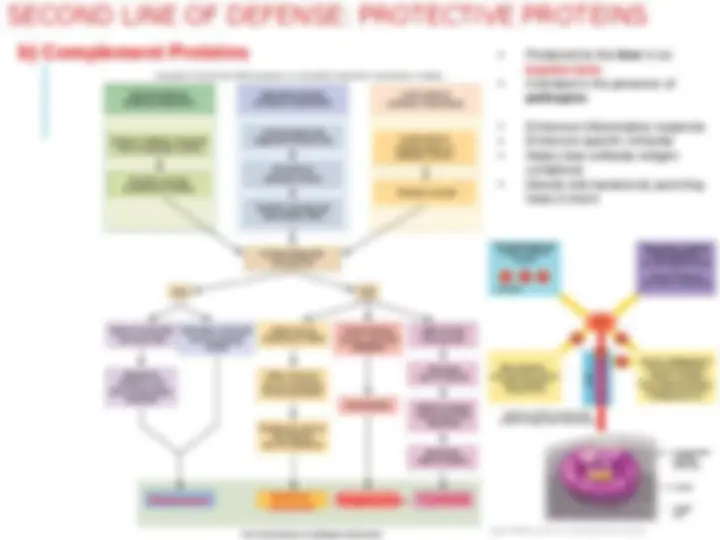
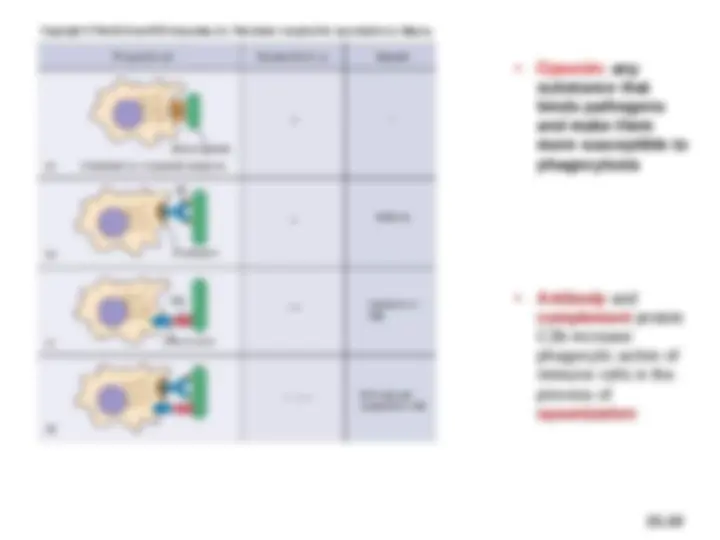
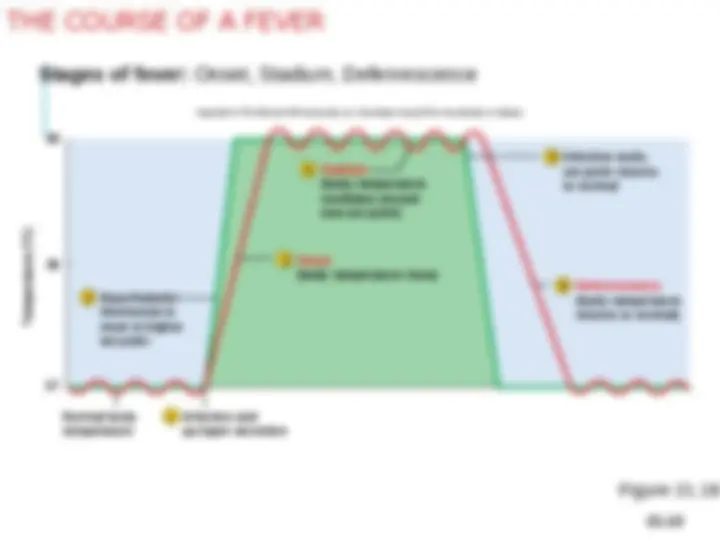
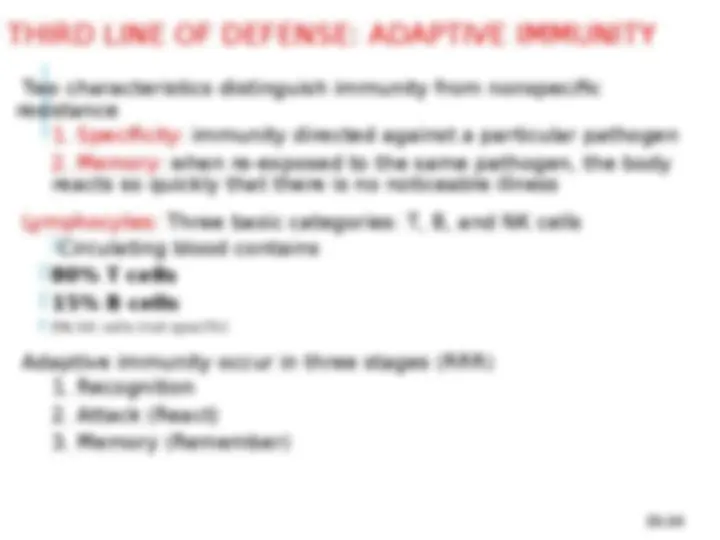
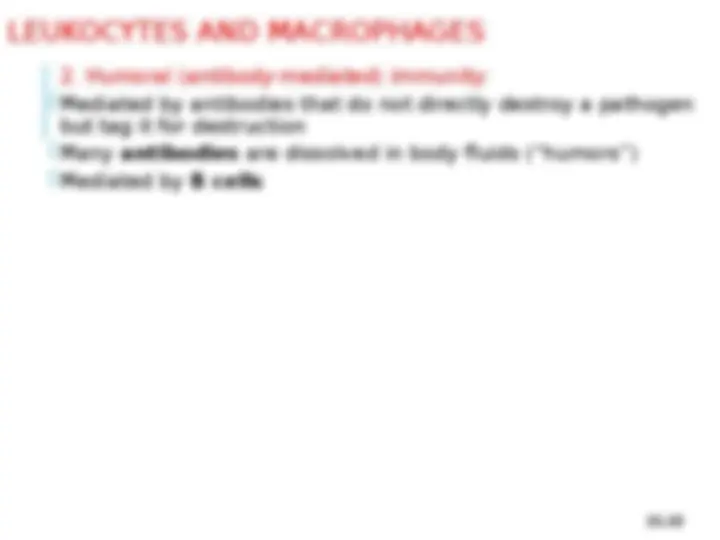
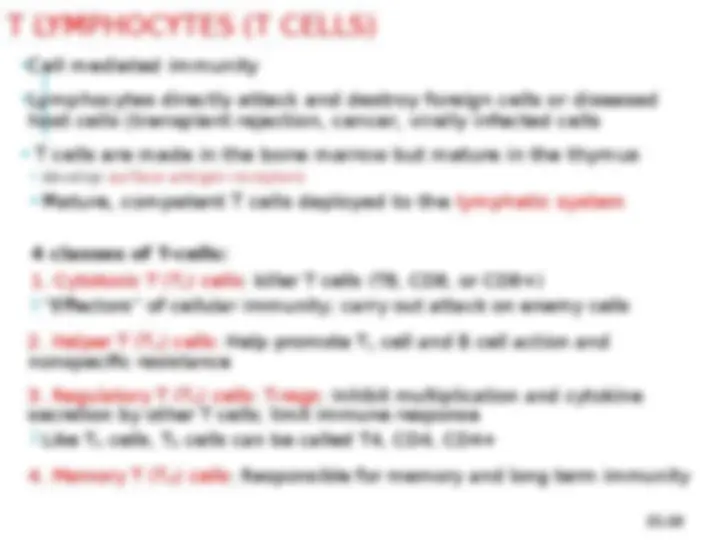
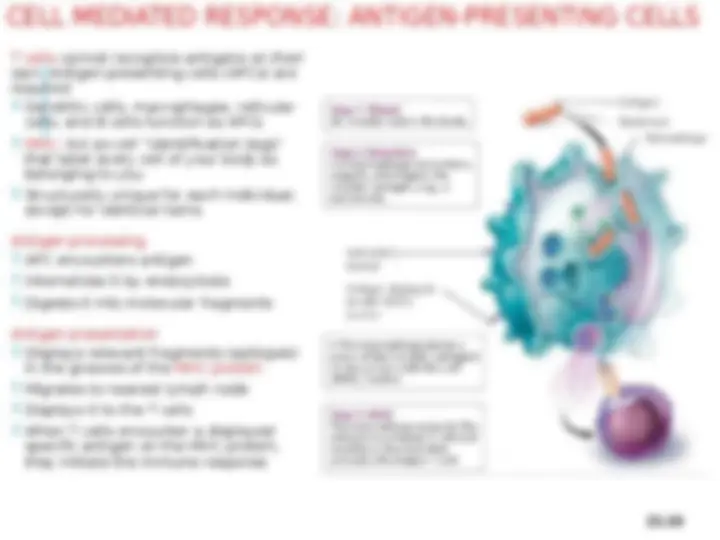
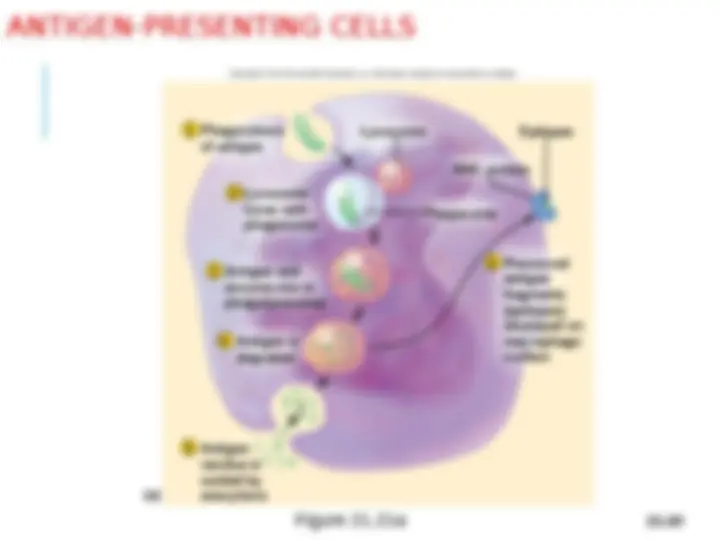
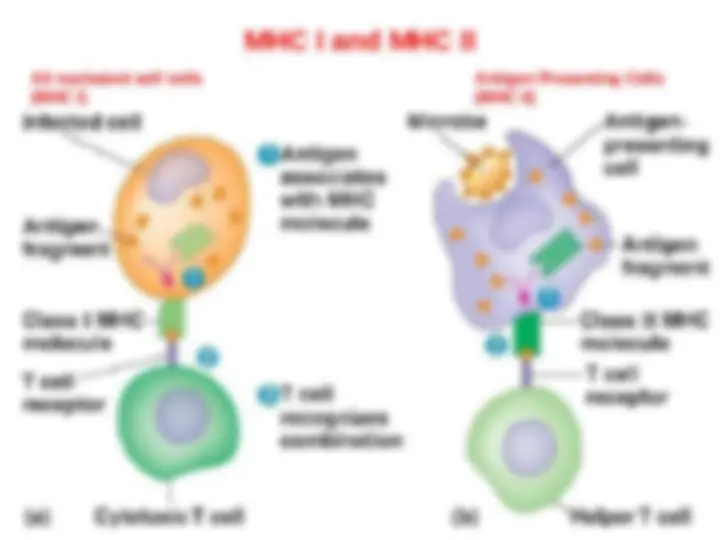
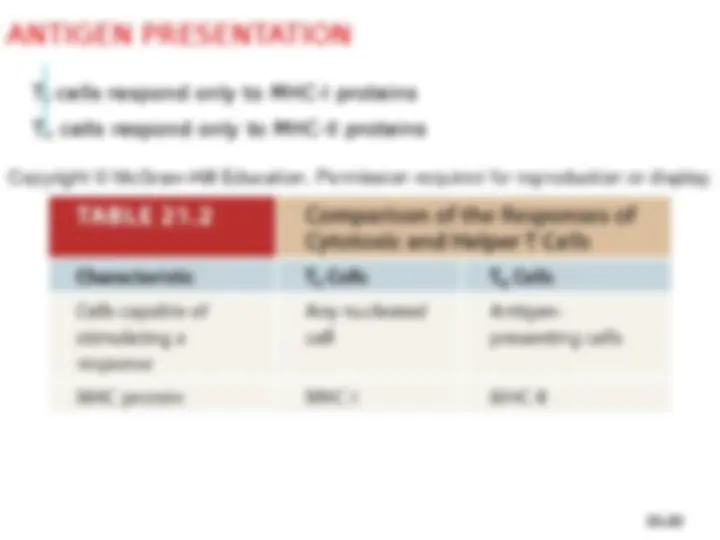
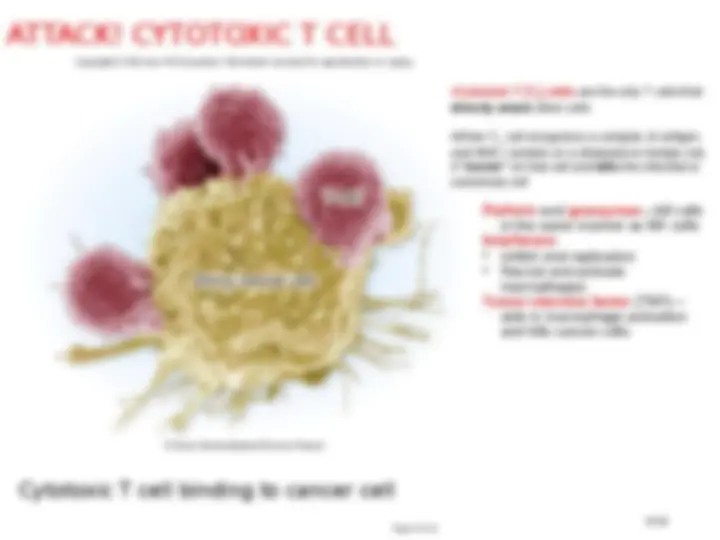
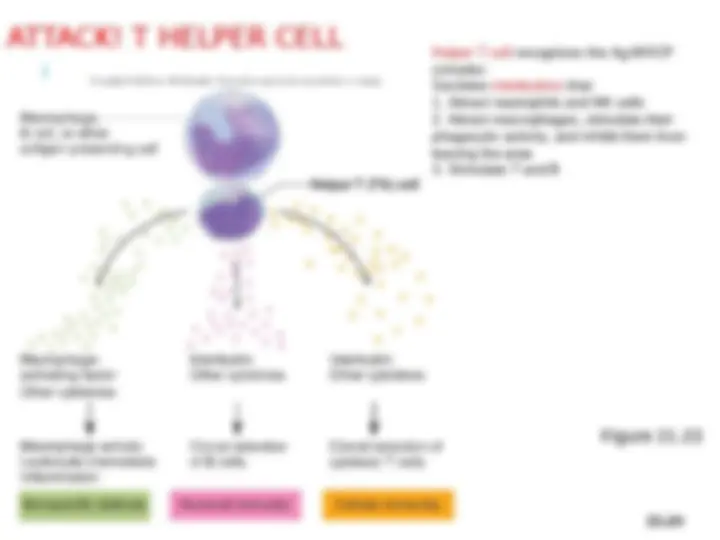
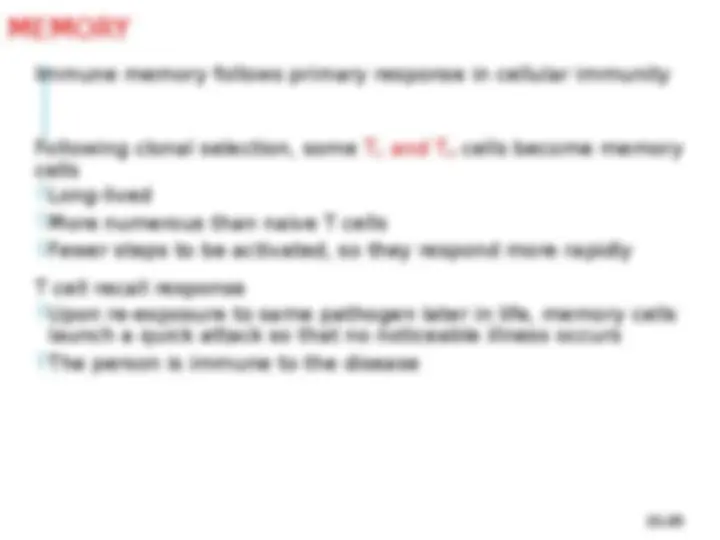
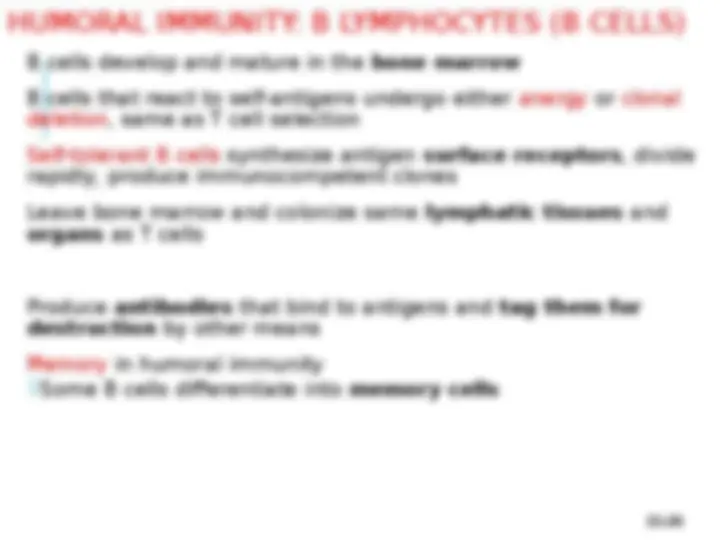
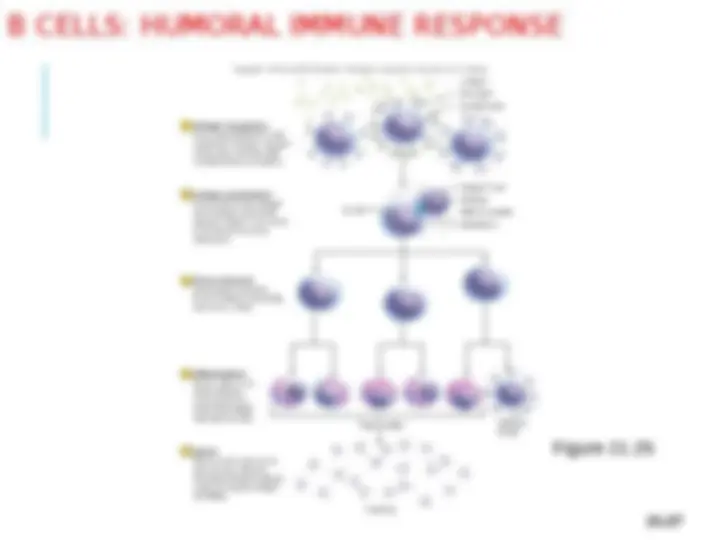
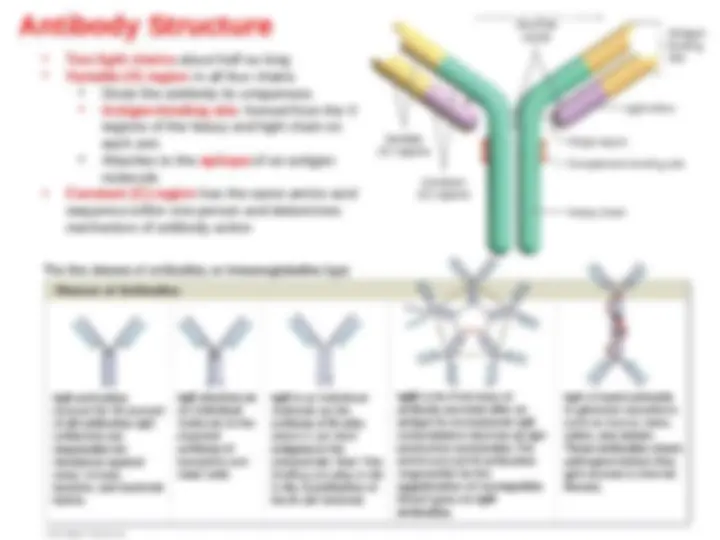
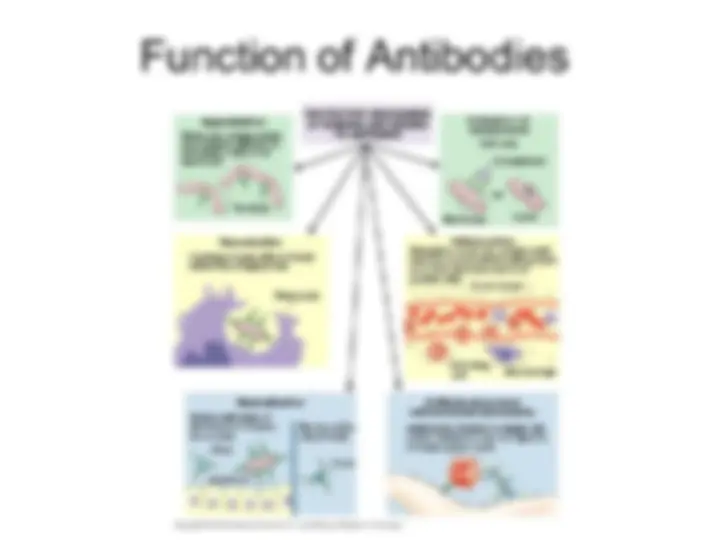
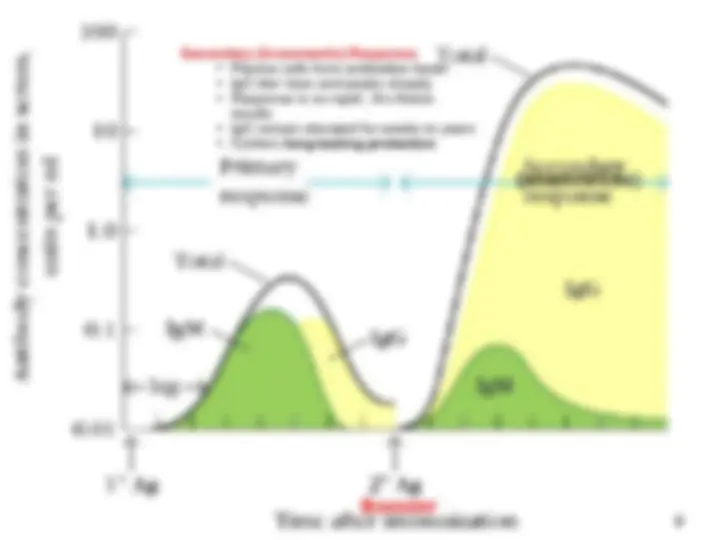


Study with the several resources on Docsity

Earn points by helping other students or get them with a premium plan


Prepare for your exams
Study with the several resources on Docsity

Earn points to download
Earn points by helping other students or get them with a premium plan
Community
Ask the community for help and clear up your study doubts
Discover the best universities in your country according to Docsity users
Free resources
Download our free guides on studying techniques, anxiety management strategies, and thesis advice from Docsity tutors
A&P Lecture for the Immunity System
Typology: Lecture notes
1 / 30

This page cannot be seen from the preview
Don't miss anything!























Fig14.
Copyright © The McGraw-Hill Companies, Inc. Permission required for reproduction or display.
HOST
DEFENCES
The second line of defense is a
cellular and chemical system that
comes immediately into play if
infectious agents make it past the
surface defenses. Examples include
phagocytes that destroy foreign
matter, and inflammation which holds
infections in check.
The third line of defense includes
specific host defenses that must be
developed uniquely for each microbe
through the action of specialized white
blood cells. This form of immunity is
marked by its activity toward specific
pathogen s and development of
memory.
Innate,
nonspecific
Acquired,
specific
B and T lymphocytes,
antibodies, cytotoxicity
Second line
of defense
First line
pf defence
Physical
barriers
Chemical
barriers
Genetic
barriers
Inflammatory
response
Interferons Phagocytosis Complement
The first line of defense is a
surface protection composed of
anatomical and physiological
barriers that keep microbes
from penetrating sterile body
compartments.
Third line
of defense
Fig14.
Sebaceous
glands (fatty
acids)
Tears
(lysozyme)
Mucus
Saliva
(lysozyme,
lactoferrin,
peroxidase)
Commensals
Intact
skin
Wax
Low pH
Cilia
Sweat
Defecation
Urination
Paneth
cells
Copyright © The McGraw-Hill Companies, Inc. Permission required for reproduction or display.
Stomach
acid
Mucus
Intestinal enzymes
Mucus
poor for microbial growth
Acid mantle: thin film of lactic and fatty
acids from sweat and sebum that inhibits
bacterial growth
microbes
Digestive, respiratory, urinary, and
reproductive tracts are open to the exterior
and protected by mucous membranes
walls
Viscous barrier of hyaluronic acid
Hyaluronidase—enzyme used by pathogens
to make hyaluronic acid less viscous
Edema contributes to tissue cleanup
Reduces venous drainage ; promotes lymphatic
drainage
Lymphatics collect and remove bacteria, dead cells,
proteins, and tissue debris better than blood capillaries
Platelet-derived growth factor is secreted by blood platelets
and endothelial cells in injured area; Stimulates tissue repair
Hyperemia delivers oxygen , amino acids, and other
necessities for protein synthesis
Fig14.
Degrades virus
nucleic acid
Blocks virus
replication
Virus
release
Assembly
of viruses
Viral
nucleic acid
Virus
infection
Infected
cell
Nearby
cell
Attachment of IFN
to special receptor
Synthesis of antiviral proteins
Signals
activation of genes
Synthesis
of IFN
gene
Copyright © The McGraw-Hill Companies, Inc. Permission required for reproduction or display.
THE ACTION OF A NATURAL KILLER CELL
THE COURSE OF A FEVER
Copyright © The McGraw-Hill Companies, Inc. Permission required for reproduction or display.
Temperature (°C)
37
39
38
2
4
3
1
5
6
Infection ends,
set point returns
to normal
Defervescence
(body temperature
returns to normal)
Stadium
(body temperature
oscillates around
new set point)
Onset
(body temperature rises)
Normal body
temperature
Hypothalamic
thermostat is
reset to higher
set point
Infection and
pyrogen secretion
Stages of fever: Onset, Stadium, Defervescence
5% NK cells (not specific)
Natural active immunity Production of
one’s own antibodies or T cells as a result
of infection or natural exposure to antigen
Artificial active immunity Production of
one’s own antibodies or T cells as a result
of vaccination against disease
Vaccine: dead or attenuated (weakened)
pathogens; stimulates the immune
response without causing the disease
Booster shots: periodic immunizations to
stimulate immune memory to maintain a
high level of protection
CELL MEDIATED RESPONSE: ANTIGEN-PRESENTING CELLS
T cells cannot recognize antigens on their
own. Antigen-presenting cells (APCs) are
required
Dendritic cells, macrophages, reticular
cells, and B cells function as APCs
MHC: Act as cell “identification tags”
that label every cell of your body as
belonging to you
Structurally unique for each individual,
except for identical twins
Antigen processing
APC encounters antigen
Internalizes it by endocytosis
Digests it into molecular fragments
Antigen presentation
Displays relevant fragments (epitopes)
in the grooves of the MHC protein
Migrates to nearest lymph node
Displays it to the T cells
When T cells encounter a displayed
specific antigen on the MHC protein,
they initiate the immune response
Phagosome
Epitopes
MHC protein
(a)
2
3
4
5
6
1 Phagocytosis
of antigen
Lysosome
Lysosome
fuses with
phagosome
Antigen and
enzyme mix in
phagolysosome
Antigen is
degraded
Antigen
residue is
voided by
exocytosis
Processed
antigen
fragments
(epitopes)
displayed on
macrophage
surface
Copyright © The McGraw-Hill Companies, Inc. Permission required for reproduction or display.